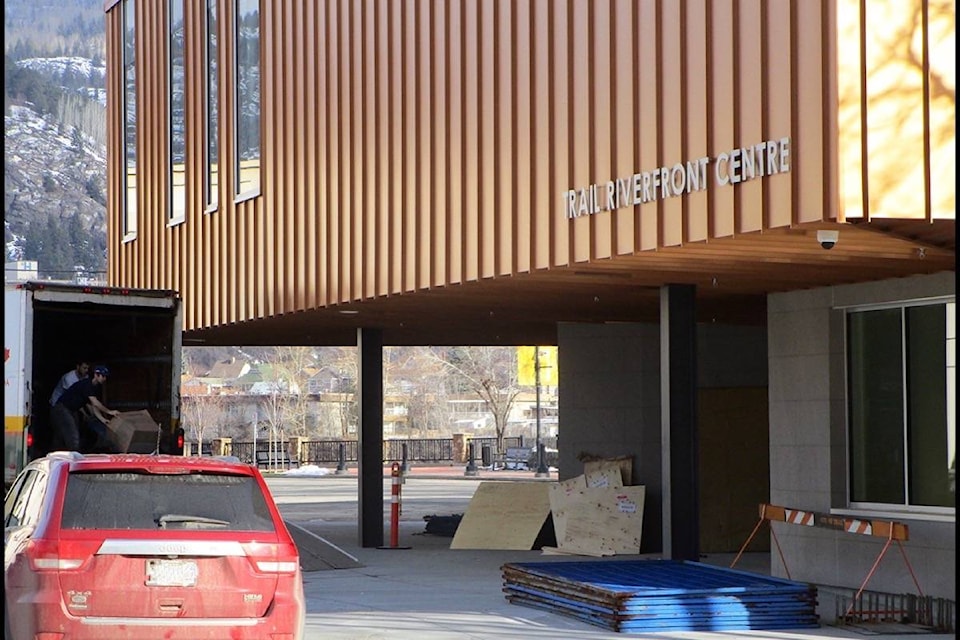Limited revenue generation in the City of Trail has the municipality increasingly relying on residential taxpayers to cover everything it needs to operate throughout the year.
Four years ago the city’s dependency on all property levies sat at approximately 72 per cent. The number now nears 80 per cent for 2018’s $19.2 million budget, excluding Trail’s $8 million apportionment for regional services such as police, fire and sewer.
“The city’s increased dependency on all property taxes is driven by limited revenue generation from other sources and increased expenditures which this year reflects the opening of the Riverfront Centre with its associated operating and debt funding requirements,” Trail Mayor Mike Martin told the Trail Times.
“It will take a little bit of work to provide a full analysis, but for now there is a general decrease in every other revenue source – grants, sales of services such as recreation and the airport, and other revenue sources such as parking, rentals and leases.
“City Council continues to explore revenue generating opportunities while respecting the expectations of the community.”
For a third straight year, Trail council has chosen to keep a $260 flat tax in place and increase residential taxes by 6 per cent, while the maintaining industrial class rate at 61.33 per cent and the business ratio at 2:1.
Status quo means the average residential property tax levy will increase $74 to $1,240. Major industry would experience a $525,083 increase in municipal property taxes to $8.7 million (based on role assessment). And a $200,000 business assessment, that did not experience a change in assessed values, will see a tax increase of $13.
The Times asked the mayor why council ultimately chose this option, as opposed to varying all class rates and reducing or eliminating the flat tax which was doubled in 2016 to “level the playing field” for assessment disparities.
“In 2016 the flat tax was increased from $130 to $260 to offset the impact of disproportionate changes and wide variances in residential assessments from the previous year,” he began.
“Property assessments in 2017 have seemingly stabilized, which under normal circumstances, would have allowed for a reduction of the flat tax without creating significant abnormalities in residential taxation.”
At the Feb. 5 budget review, council was provided with options associated with the City of Trail’s 2018 municipal budget and apportionment of property taxes including a reduction in the flat tax.
While the motion passed, minutes from the Feb. 5 governance meeting noted Coun. Robert Cacchioni opposed.
“However, given the overall impact of the Riverfront Centre with its associated operating and debt funding requirements, it would appear that any change in the flat tax would create an inequity in residential taxation,” Martin said.
“And for this reason should be considered in future years.”
He says council directed staff to advance reporting which would retain the 2017 apportionment approach, and not undertake any adjustment to the flat tax in 2018.
“Council remains committed to establishing a taxation profile which is fair and equitable to all,” Martin said.
“And this direction will be considered again as the budgeting process continues ahead of establishing the required bylaws.”
Fairness, equity, competitiveness, service utilization, comparisons with other similar municipalities and the historic apportionment, are all relevant factors when council considers property tax apportionment each year, he continued.
As far as Class 6 business taxes, the Canadian Federation of Independent Business has long promoted the ratio should not exceed a 2:1 ratio, Martin clarified.
“With residential taxes as part of ensuing equity and by keeping business property taxes at a level that allows business to remain competitive,” he explained. “Council recognizes this approach in establishing the Class 6 Business tax.”
With respect to Class 4 Major Industry, the proposal is to retain the same level of taxation as established in 2015, 61.33 per cent of the total municipal levy, Martin said.
